What Are The Disadvantages Of Epoxy Flooring?

All of the disadvantages of epoxy flooring are provided for you in this post. Every type of flooring has its own strengths and drawbacks as well. And epoxy flooring is no exception. Knowing its drawbacks can help you to have a more careful and thorough consideration.
Besides the main topic, I will also give you some additional information about epoxy flooring, including the definition, cleaning, and maintenance.
What Is Epoxy Flooring?
First, I want to provide the definition, key features, and different types of epoxy flooring so that you have good background information about it.
Definition And Characteristics
Epoxy flooring is also called resinous flooring. It is composed of various epoxy coatings which are made of epoxy resin and polyamine hardener (1). The mixture creates multiple plastic layers of epoxy stuck together. Epoxy flooring is at least 2 millimeters thick.
This type of flooring is eye-catching, durable, long-lasting, and sustainable. In addition, you can freely choose the design that you want. It also has an anti-slip coating that protects it against stains and moisture.
Due to its long lifespan and good durability, epoxy flooring can be used both inside and outside.
Types Of Epoxy Flooring
Epoxy has 5 distinctive types. Each has some outstanding features that may be more suitable for your purpose than the others.
Metallic Epoxy Flooring
This type of epoxy flooring is suitable for those who like aesthetic flooring. You can choose from a wide range of colors, patterns, and textures. The swirling and marbling patterns are the most prevalent ones.
You can use this flooring in every room of the house. Its matte finish will upgrade your house to the next level.
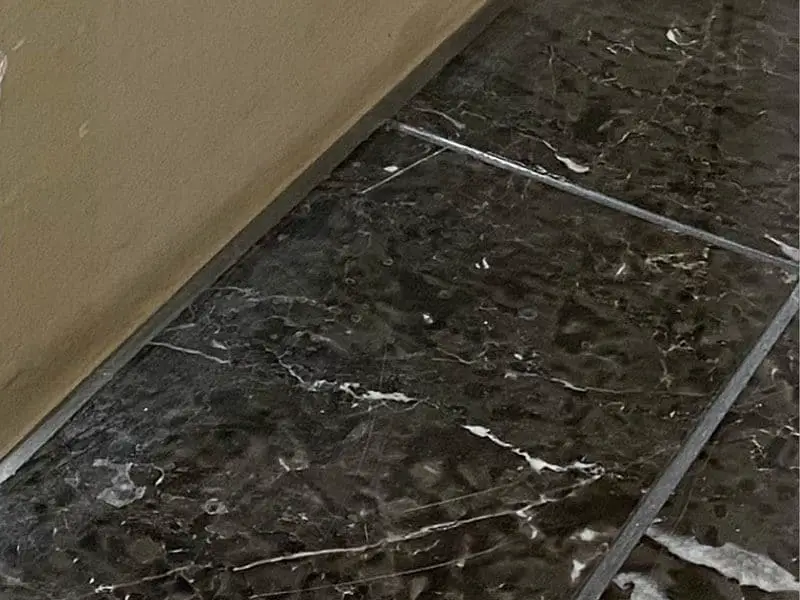
Flake Epoxy Flooring
You will often see flake epoxy flooring in swimming pools, showrooms, kitchens, and sports venues due to its anti-slippery nature. This flooring has multiple-color flakes on the surface, which make it look stylish and appealing.
Solid Epoxy Flooring
Solid epoxy flooring comes in a single color. It is an ideal option if you love simplicity. You can choose your favorite color in a huge collection. Because of its elegant nature, this variety of epoxy flooring is mostly used in convention halls, buildings, and restaurants.
Graveled Epoxy Flooring
If you wish to decide how the flooring should look like, gravel epoxy flooring is the best choice. You can add what you want to the floor surface, such as your brand’s logo, like what the restaurant often has.
Self-Leveling Epoxy Flooring
Suppose that you are renovating an old, uneven, and damaged surface, I recommend that you pick self-leveling epoxy flooring. It is available in many different colors.
The appropriate places to install this flooring are office buildings, warehouses, and athletic facilities. You can also choose it for your kitchens and bathrooms.
Disadvantages Of Epoxy Flooring: A Thorough Discussion
This is the main part of this article. I will show you all of the drawbacks of epoxy flooring. Based on them, you can decide whether it meets your requirements or not.
It’s Not Exactly A Flooring
Although its name is “epoxy flooring,” it is actually a coating that is applied on steel, wood, and concrete flooring. You will need to replace it with a new coat when it wears. Or else, chips and cracks may hinder the activity of toolbox wheels and wheeled carts.
If you invest in high-quality epoxy flooring, it can last long and thus become a permanent solution.
You should also note that when you install epoxy flooring, you have to follow the instructions provided by the manufacturer strictly, or else scratches will appear. The flooring will have a shorter lifespan.
Furthermore, when you plan to replace the old coating with a new one, you have to consider the weather carefully. If it is too humid, you should not do it because the moisture will badly affect it.
Finally, epoxy flooring can easily crack and chip when experiencing heavy weight and high foot traffic. The damage will become larger overtime and cause the floor to wear out. Eventually, you will have to invest in a new coat.
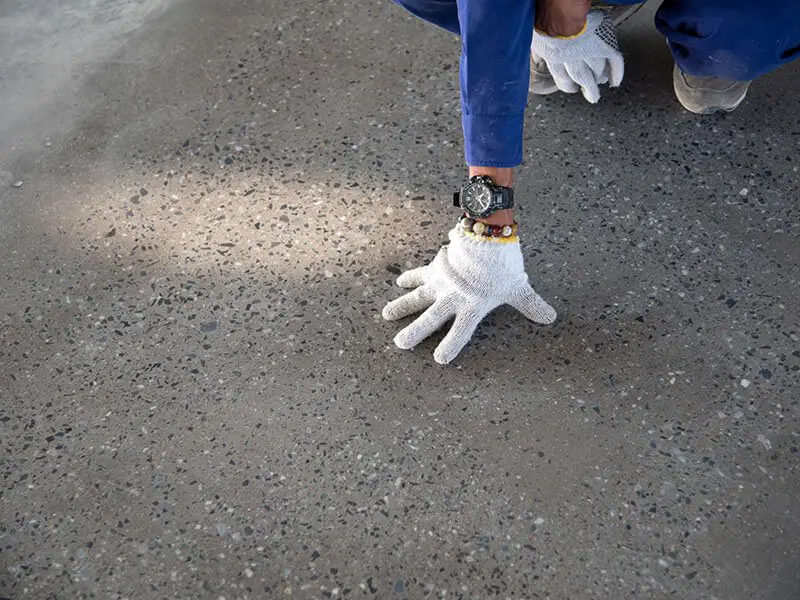
It Contains Toxic Fumes
Epoxy flooring can produce an ammonia-like smell when you are installing it, especially when it is wet. This odor can be harmful to your health. It may cause inflammation and irritation in some parts of your body, such as your nose, eyes, throat, and even lungs.(2)
To protect your health, you should wear enough protective clothes when installing epoxy flooring. Note that dark-color epoxy is more smelly than light-color epoxy.
However, the fume will no longer be present when the floor cures completely. It may come back when you sand the floor but you will not inhale it so don’t worry that it will affect your health.
It Hardens Slowly
In addition, warm weather is the necessary condition for it to dry properly. This can be an issue if you are in a hurry. You also have to allow drying time for each coat. However, most of the time, it takes 3 days to cure. For a small room, it may dry in only 1 day.
The installation process of epoxy flooring can last up to 30 days because it takes a long amount of time to cure.
It Makes Your Feet Cold
Epoxy flooring will make your feet cold, in contrast to other types of flooring like hardwood flooring. However, if you can invest in a heating system, this disadvantage is no longer a problem.
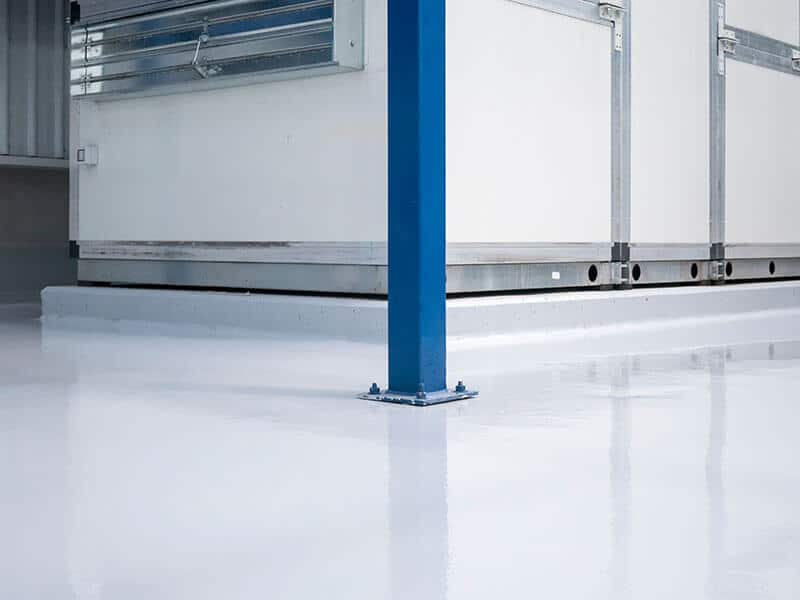
It Can Discolor
Since you have to use different sets of materials when installing epoxy flooring. They may alter the color of the coating a little bit. Also, when the material is stored under direct sunlight, the ultraviolet rays can also affect the color.
Its Maintenance Cost Is High
When you maintain epoxy flooring, you have to buy a lot of materials, including some chemical products such as cleaning acids. You also need to buy protective clothes, namely protective gear and eye-wear to safely interact with chemicals. These can be very costly.
It is Not Easy To Install
To install epoxy flooring, you need a great amount of time and effort. It normally takes several days because it dries very slowly. But you have to wait for one coat to dry before applying the next coat.
In addition, you must ensure that there are no oily or greasy and oily stains and solvents on the flooring.
You also have to clean the flooring a few times and fill all of the cracks on it. Nowadays, you can just hire some experts to install the epoxy flooring. If you want to do it yourself, there are comprehensive tutorials that can help you. The equipment and materials are quite easy to find.
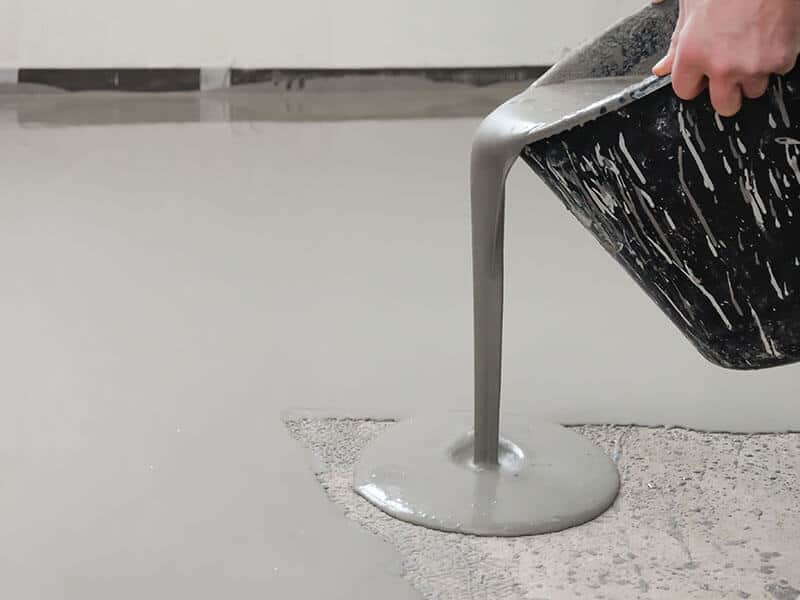
It Is Sensitive To Moisture
Although epoxy flooring is water-resistant, water can still be a problem if it seeps into the surface. Bubbles and buckling may appear when the flooring is excessively moisturized. You need to repair the flooring when that happens.
In the installation process, epoxy flooring also does not like moisture. You must clean the concrete floor properly and let it dry completely. If you install it on a damp subfloor, it will wipe away the upper layer of the subfloor.
As such, it is not suitable to use in moist areas, for example, the basement.
It Can Be Slippery
When you accidentally pour water or oil on the non-porous epoxy flooring, it can get slippery and make you fall. This can be dangerous for your parents and children.
But you don’t have to worry too much about it since it can be tackled using a few methods. First, you can add aluminum oxide or silica to increase the grip. Or, use a shark grip to make it less slippery. Work with a professional to find the best way for your epoxy flooring. It can be costly.
The Uninstallation Process Is Also Difficult
When you have already installed epoxy flooring, it is hard to remove it if you want to do some repair, change the colors and designs, and replace the epoxy coat.
In addition, you need some advanced tool to uninstall epoxy flooring, such as an industrial grinder. If you don’t have it, you need to rent one or call for the help of experts. If the process does not run smoothly, the floor underneath may be damaged.
It Can Be Costly
Besides the cost to buy and install epoxy flooring, you need to spend money on other necessary equipment and materials, such as protective clothes, cleaners, and other chemical products that are needed in the installation process.
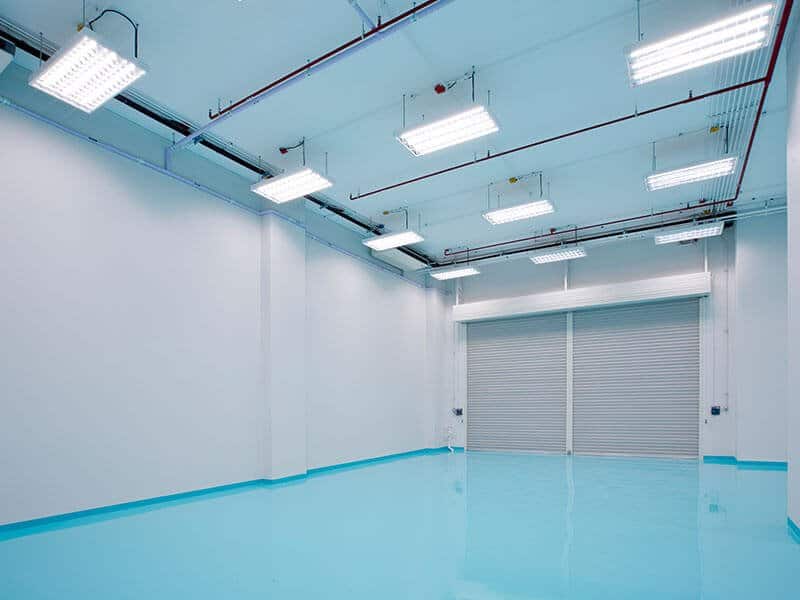
You Should Also Take Into Consideration The Advantages
Does the above disadvantage make you hesitate to buy epoxy flooring? If yes, this section will make you love epoxy flooring again.
It Has A Long Lifespan
Compared to similar types of flooring, epoxy flooring lasts relatively longer. If installed and maintained properly, it can retain its quality for at most 1 decade. It is important that you choose a trusted brand to ensure it lasts as long as it should be.
It Has The Ability To Mask Damages
A wonderful ability of epoxy flooring when you install it over an existing concrete floor is that it can hide the imperfections very well, making your flooring look new again. This is particularly true for metallic epoxy flooring because it has a polished characteristic.
It Can Adapt To Chemicals
While other types of flooring, especially natural flooring, is often sensitive to chemical stains, they cannot harm epoxy flooring. It is highly resistant to chemicals, so you don’t have to panic when detecting stains. They can never seep into the flooring.
It Is Affordable
Epoxy flooring is relatively affordable than other types of flooring. It has a long lifespan, so you don’t have to replace it often. This can help you to save a lot of money.
On top of that, the installation process does not have to be entirely done. You don’t have to spend any buck on the subfloor, which is amazing. You can install it on the existing steel, concrete, or wood floor.
Its Design Is Up To You
Epoxy flooring has countless designs with different types of colors and textures. You can freely create your favorite pattern, such as geometric, checkerboard, and diamond. Or, you may want to add paint flakes and chips to make the floor more colorful. Everything is up to you.
You can also choose between honed stone finish or colored finish. Even when you coat the floor with a few coatings, it remains unsticky. The pattern you design will not fade away soon.
It Is Resistant To Some Sources Of Damages
Another great advantage of epoxy flooring is that it can fight against various damaging factors, such as weight, water, wear, and tear. In addition, stains cannot easily damage it. You can hardly find this feature in other flooring options.
You can also install some coatings to help it to be more durable and able to fight against damage. You can also heat heal the floor to protect it against heat.
It Can Endure Most Weather Condition
Epoxy flooring is not sensitive to sunlight and can endure fire. It can also remain undamaged when the temperature is below 0°F and above 140°F. Due to this characteristic, epoxy flooring can be installed both indoor and outdoor.
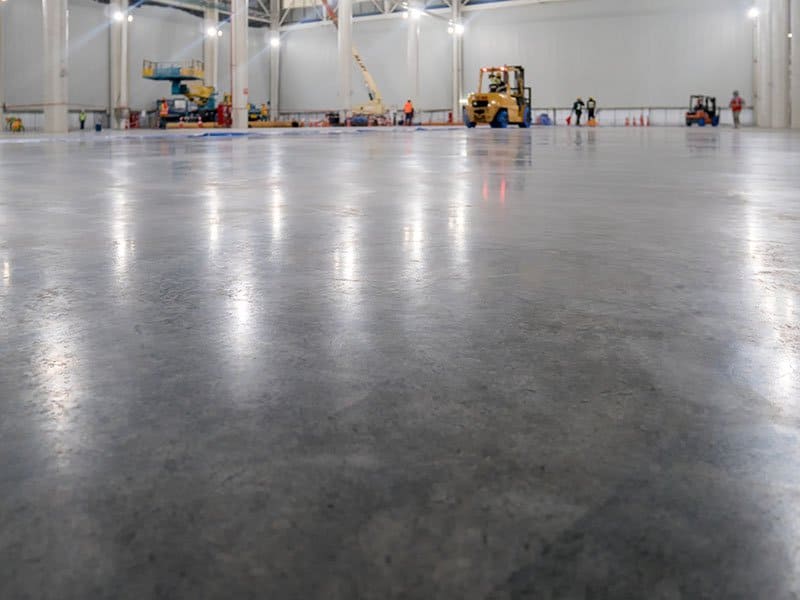
How To Install Epoxy Flooring?
I have mentioned that epoxy flooring is quite hard to install. But maybe it is not difficult for you at all. Read this instruction and decide whether you can do it on your own.
What You Need
- Plastic garbage bags
- Water
- Soda blasting
- Vacuum cleaner
- Pressure washer
- Fine-grit sandpaper
- Epoxy filler
- Industrial degreaser
- Hydrochloric acid
- Baking soda
- Solvent-based epoxies
- Epoxy primer (optional)
- Epoxy filler
- Fans
- Lung protection
- Rubber boots
- Gloves
- Eye protection
- Snap roller
Step 1: Test To See If Your Flooring Is Compatible With Epoxy
Firstly, you need to do some necessary tests to decide whether the current space is suitable for installing epoxy flooring.
Place 4 plastic garbage bags at all of the corners of the room. Wait for 1 day and check whether there is moisture at the bottom of the bags. Dry bags mean that you can install epoxy flooring. Otherwise, epoxy flooring is not for you.
After you install the concrete slab, leave the flooring for 28 days. Thereafter, put 240ml of water on it. If the water just stays on the surface of the flooring, you can proceed with the installation process.
Finally, use soda blasting to clean off all paint on the flooring. After you’ve finished, use water to clean all of the residues. You also have to vacuum it.
Step 2: Clean The Flooring
If your flooring has oil stains and grease, you have to remove them completely using an industrial degreaser. Pay attention to the area that is affected by tires and has rubber residue. It can be cleaned effectively by sanding with fine-grit sandpaper.
Next, complete the cleaning process by vacuuming the flooring once again. Use a pressure washer to clean off anything left.
Pro tip: If you can cover the wall with some plastic drop cloths to prevent it from being affected by the installation.
Note: It’s great if you have someone who can assist you during the installation process. This will help to accelerate it and make it no longer a labor-extensive task.
Step 3: Etch The Flooring
Now, you have to etch or grind the flooring. Grinding is often done by the professional only. Since this is a DIY project, I will instruct you to etch it instead.
Dilute the hydrochloric acid following the manufacturer’s instructions. Pour it into a spray bottle and spray it all over the flooring.
Use water to rinse the flooring entirely and wait until it is dry, which normally takes a night. After that, use the epoxy filler to seal all cracks on the surface.
Step 4 (Optional): Apply The Primer
You can choose to prime the flooring to make it smoother, especially if it has some imperfections, such as flaking. Use a snap roller to apply it to the flooring. Then leave it to dry for up to 1 day. Make sure you mix 2 parts of the primer beforehand.
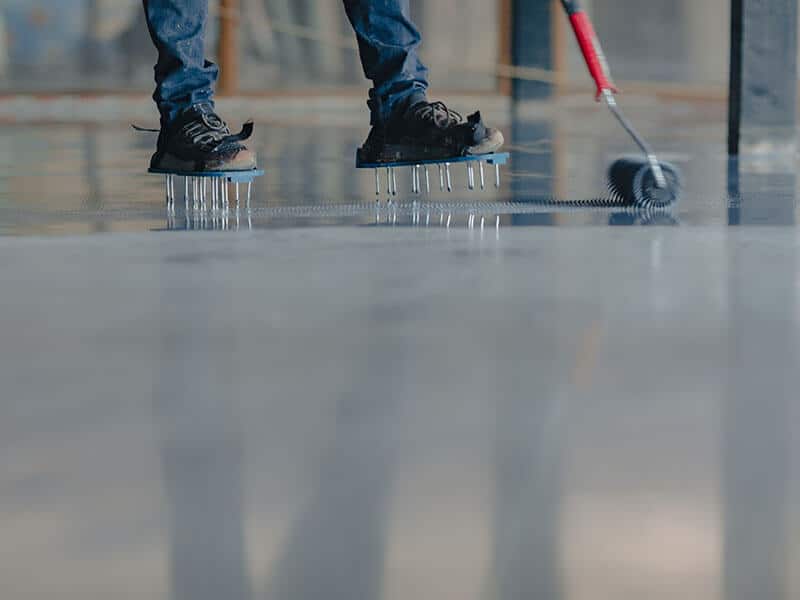
Step 5: Apply The Epoxy
This is the last step already. You’re about to have gorgeous epoxy flooring. As I have said in the disadvantage section, the smell of epoxy is toxic. So make sure you wear gloves, eye protection, lung protection, and rubber boots in this step.
There are two kinds of epoxies on the market, namely solvent-based and water epoxy. You can choose one of them. Two coats are needed. You should note that when you buy epoxy, there are two parts. You have to combine them together.
You will apply a thin and even epoxy using a snap roller. Just roll it from the farthest corner of the room and move it towards the entry door.
Leave it for 1-2 days until it is dry. Make sure you open all of the windows. You can use fans to speed up the drying process. However, if you water epoxy, you can apply the second coat when the first coat has not dried yet.
Use the same method to apply the second epoxy coat and leave it to dry completely. Do not step on it when it is still wet.
Installing epoxy flooring is no longer a challenging task. You can see this video to know more:
A Guide On Cleaning Epoxy Flooring
Are you curious about how epoxy flooring should be cleaned? I will show you right away. Cleaning epoxy flooring is not difficult at all due to its damage-resistant characteristics.
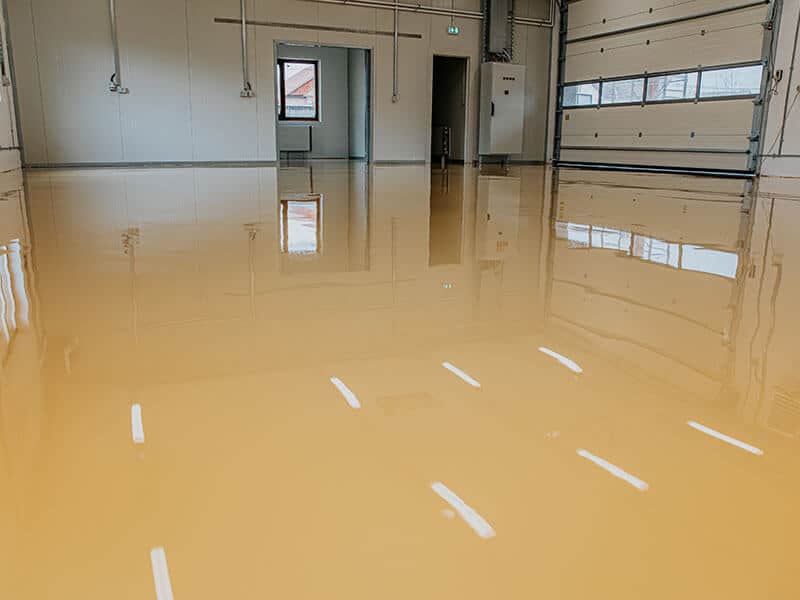
Stain Treatment
Whenever stains appear on your epoxy flooring, make sure you clean it immediately. For liquid spills, use a rag, cloth, or paper towel to wipe it out. For tougher stains, get your kitchen scrubbing sponge or a soft scrubbing pad and pour warm water on it.
To clean oil-based stains, and chemical stains such as paint and acids, clean them with a shop towel and rinse the areas thoroughly with water.
Regular Cleaning
You also have to clean the entire flooring to ensure that it is always dust-free. Dust mop the floor at least once a week to clean the debris. In addition, vacuum it monthly to clean off accumulated dust and dirt.
Deep Cleaning
You should wet clean epoxy flooring several times per year, depending on how dirty it is. Use a microfiber mop or hard foam mop and a mixture of ½ cup of ammonia and 1 gallon of water. For very dirty flooring, you can use simple green.
You can use a power washer, scrub brush, or deck brush to clean epoxy flooring. But a power washer can slightly damage it.
A detailed deep cleaning instruction for epoxy flooring is right here.
Maintaining Is Also An Important Issue
For epoxy flooring to last long, you have to know the right way to maintain it. I will share all of the best tips to help you keep your epoxy flooring in its best condition over time.
- Never use vinegar, soapy cleaners, or citrus cleaners to clean epoxy flooring.
- Clean stains immediately after you see them on the flooring.
- Clean the epoxy flooring routinely.
- Do not use a string mop to clean epoxy flooring.
- Place mats in the entry door to prevent outside debris.
- Place plywood under the jack stands or furniture legs when you move them.
- If your epoxy flooring does not shine and gets older, you should wax it to get the best look again.
- If your epoxy flooring has films, you can remove it with a deck brush and hot water.
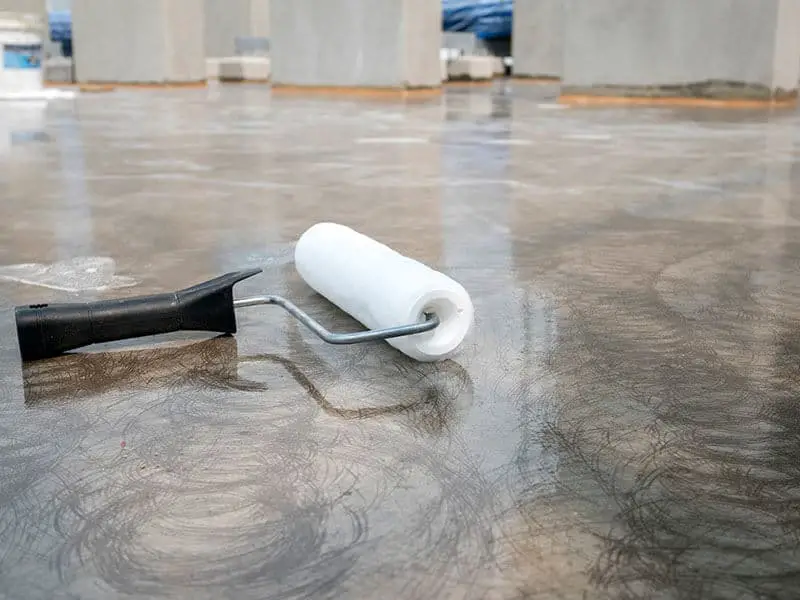
FAQs
If you haven’t found the information you need in the above content, you will probably find it in this section. In case you still cannot find it, leave a comment in the box below and I will try my best to answer your question.
Despite The Disadvantages, Epoxy Flooring Is Still A Good Flooring Option
After reading this article, I believe that you can make the decision of whether to invest in epoxy flooring or not. Choosing a flooring option is very important. You should consider every factor wisely.
If you can accept the disadvantages of epoxy flooring and find ways to solve the problem, then it will be a worthy choice. I hope that you can find the most suitable flooring for your project.
Don’t hesitate to tell me your concern, if you have one.

References
- Corrosionpedia. 2022. What is an Epoxy Coating? – Definition from Corrosionpedia.
- Oshwiki.eu. 2022. Occupational exposure to epoxy resins – OSHWiki.



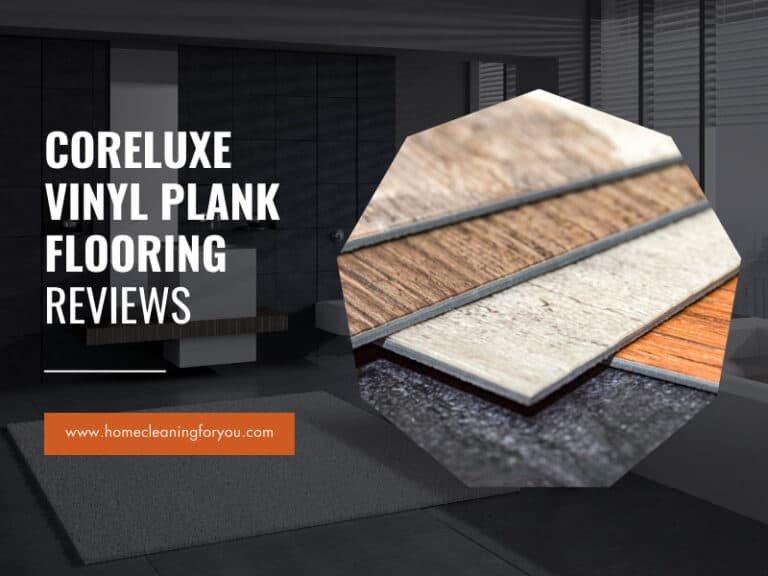




Kevin Jones
Home Cleaning Specialist
Expertise: In-depth Knowledge of Cleaning Agents and Their Uses, Advanced Home Sanitization, Techniques Expertise in Cleaning and Maintaining, Various Floor Types, Innovations in Home Cleaning Tools
School: American College of Home Economics
Kevin Jones is a seasoned home cleaning specialist with over a decade of experience in the industry. A stickler for cleanliness and organization, Kevin brings a systematic and innovative approach to home maintenance. His expertise ranges from traditional methods to modern cleaning technology, ensuring homes are not just clean but healthy environments too.